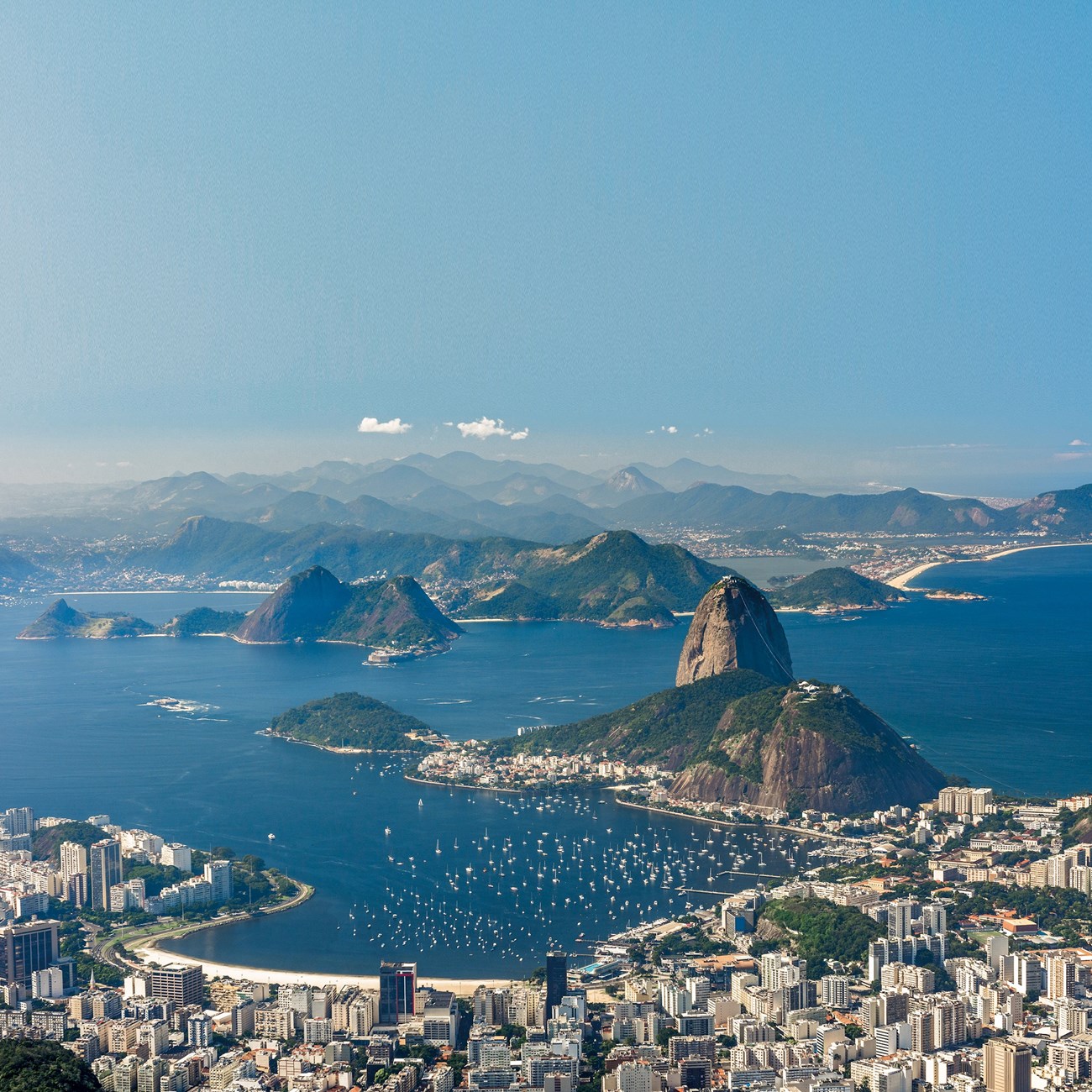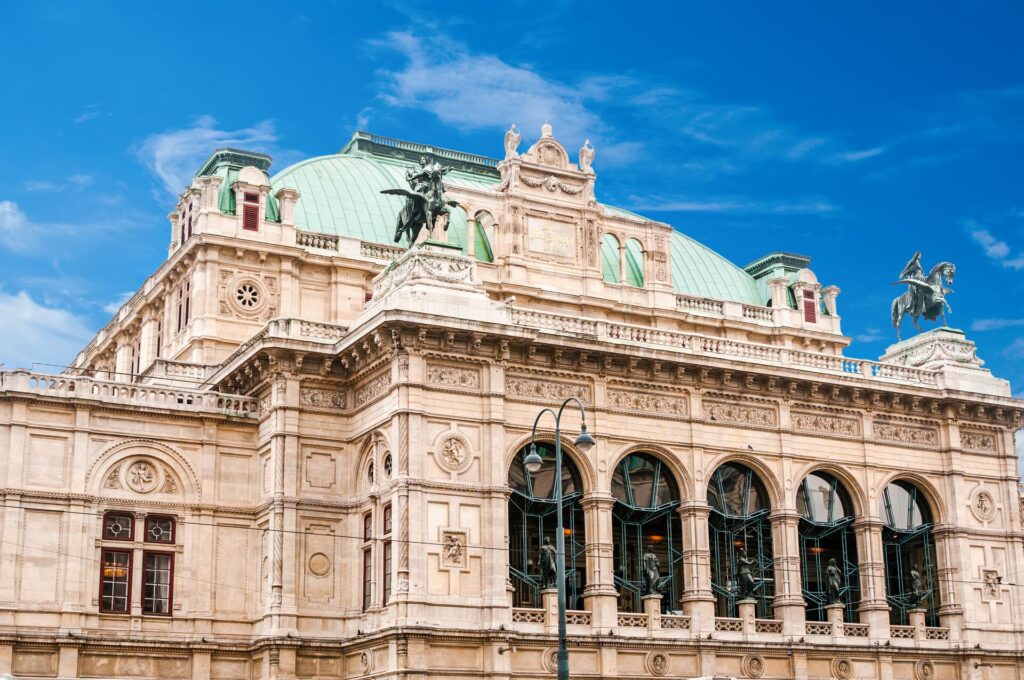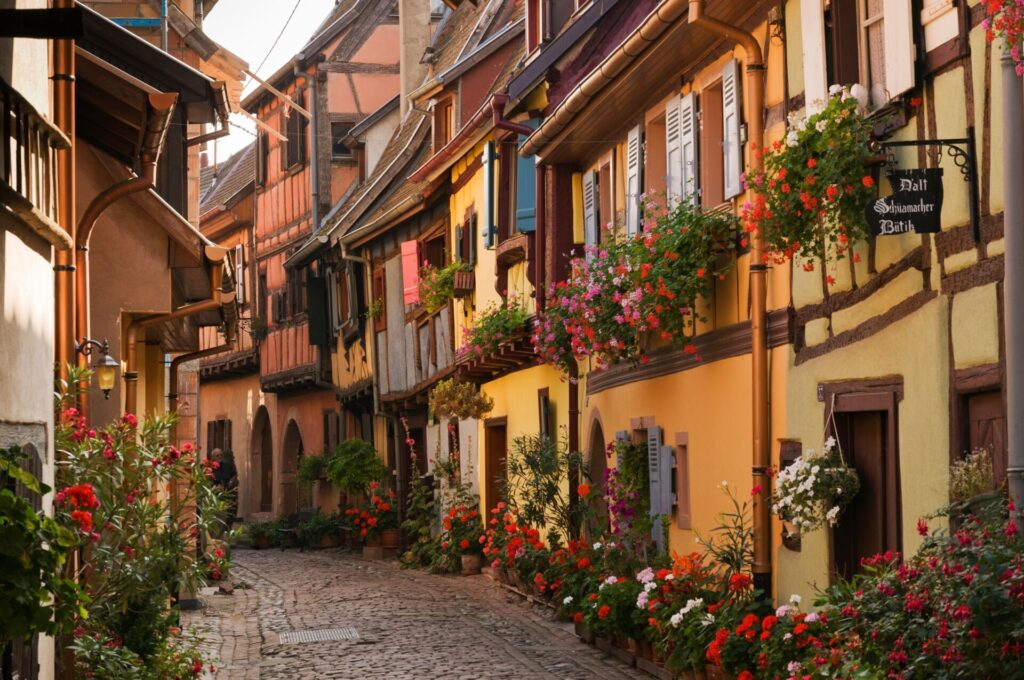8 things you never knew about Argentina's iconic dance, the tango
Brazil vs Argentina: Your guide to Visiting Both Sides of Iguassu Falls
When it comes to the world’s most spectacular natural wonders, the thundering cascades of Iguassu Falls top many peoples’ lists. This breathtaking series of waterfalls straddles the border between Misiones province in Argentina and Paraná state in Brazil, leading to one question – Brazil vs Argentina, which side is best to view the falls from?
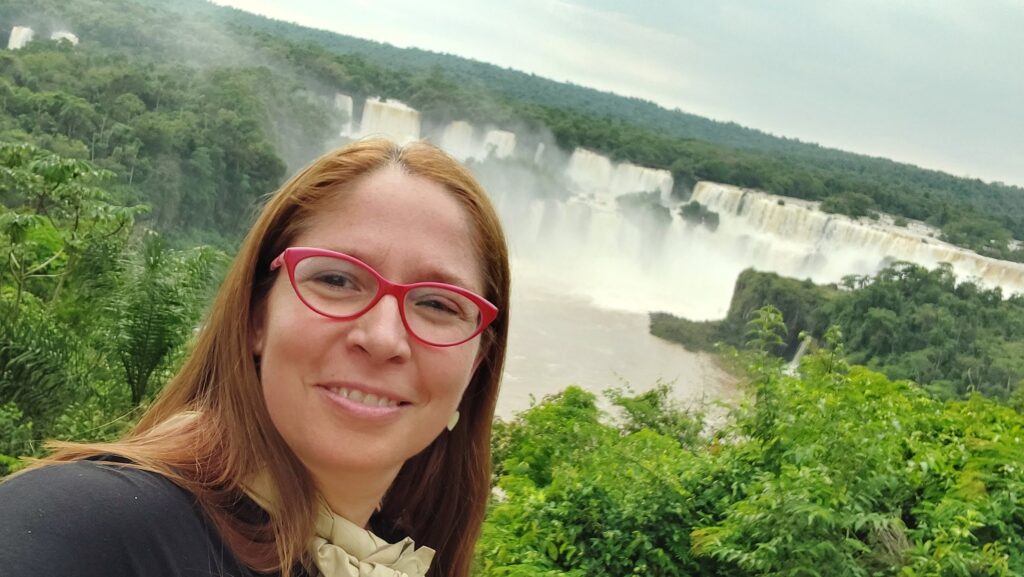
Meet Fernanda
To help us out we spoke to Travel Director Fernanda, this week’s Insightful destination expert. “You never ask people about Argentina vs Brazil for football!” she tell us, “But when it comes to the falls both sides are very proud, have so much to offer and are happy to talk.”
Inspired by our new tour Contrasts of Brazil & Argentina, Fernanda set out to answer the big question for all first-time visitors to these two South American destinations: which side of the border is the best, when it comes to viewing Iguassu Falls?
The Iguassu Falls: a unique natural wonder
The Iguassu Falls (Iguazú in Spanish and Iguaçu in Portuguese meaning “big water” in the indigenous Guaraní language) are nestled within protected areas; the Argentine section is part of Iguazú National Park, while the Brazilian portion lies within Iguaçu National Park, both UNESCO World Heritage Sites.
“This extraordinary natural landscape features 275 waterfalls, with 80% located on the Argentine side,” explains Fernanda. “In Argentina you can walk among the falls and even touch them, while on the Brazilian side you have magnificent 360 panoramic views.
“To experience the falls in all their beauty you need to visit and see from both sides. It’s very difficult to say that one side is better. When you’re on the Brazilian side, it’s like being in a theatre and the falls are the stage show. When you are on the Argentinian side, it’s like you are part of the show because they’re all around you.”
Formed by gods, according to legend
According to folklore of the Guarani Tribe who lived in the Iguassu area, a young girl was annually chosen for sacrifice to appease the serpent god of the Iguassu River. One year, the god fell in love with a girl who was set to marry soon, making her unworthy of sacrifice. Her lover pleaded with the tribe’s elders to spare her, but they prioritized appeasing the serpent. Desperate, the young man devised a plan for them to elope and escape down the river.
In the dead of night, they paddled away in a canoe, but the serpent god noticed and unleashed his fury, causing the river to swell and rage. As he pursued them, he tore the earth apart, throwing the young man to the riverbank while the girl fell into the Devil’s Throat. To save her, the serpent transformed her into a rock on the Argentine side and punished the boy by turning him into a palm tree on the Brazilian side. Thus, the two lovers remain eternally separated, she as the rock above the falls and he as the palm tree.
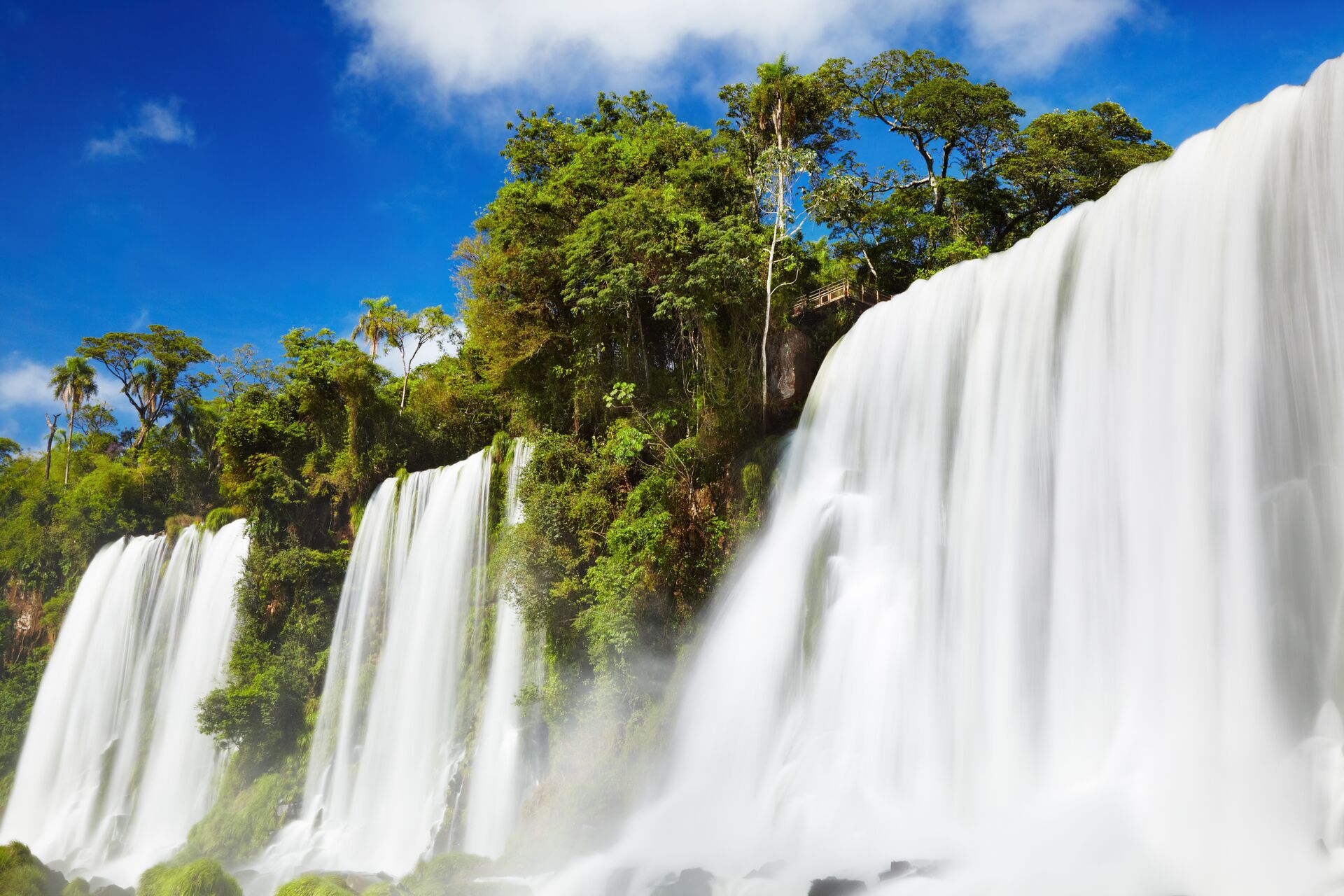
The Iguassu Falls stretch for 1.7 miles, and their height varies between 60 and 82 metres. This makes them taller than Niagara Falls and twice as wide.
The geology of Iguassu Falls
“The falls are intricately linked to the region’s geological history,” explains Fernanda. “They are situated on the Paraná Plateau, a vast basaltic lava formation spanning southern Brazil, eastern Paraguay and northern Argentina.”
This plateau emerged from volcanic eruptions during the Cretaceous and Paleogene periods, roughly 130 to 50 million years ago. The hard basalt rock creates the steep cliffs over which the falls cascade, while a layer of softer sandstone and sedimentary rocks above has been more easily eroded by the Iguassu River and its tributaries.
Brazil vs Argentina: where is best to view the falls?
“In the Argentinian side, you have more pathways, so depending on what you would like to see or how much you would like to walk, you have more possibilities,” Fernanda tells us. “You can walk in between the falls or above the falls, so the perspectives are different. Sometimes you are on a bridge with the falls right behind you. You can put out your hand to touch the water. It’s amazing.
Argentina also boasts the ‘Devil’s Throat,’ a u-shaped waterfall contains 14 falls in total and is more than 262 feet (80 meters) high.
“But with this close perspective you don’t have as many viewpoints as you have in the Brazilian side,” Fernanda counters. “There is only one pathway in the Brazilian side, and at the end of that trail you have a glass elevator, so when you go up the view is incredible.
“So, you could say that to experience the power of the falls and the power of nature to be, you want to be on the Argentinian side and to experience the romance and the views you want to be on the Brazilian side.”
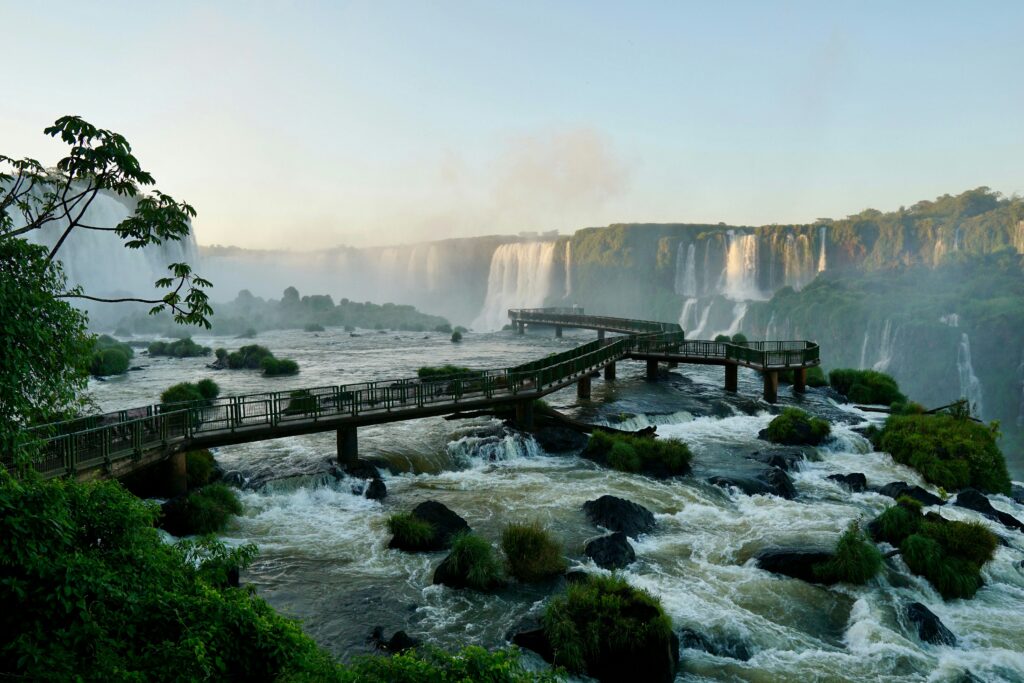
A first impression that will last a lifetime
A Travel Director for over 25 years, Fernanda has lost count of how many times she has seen the falls, but they still amaze her. As for Insight guests, she tells us “When guests arrive (in Argentina) they don’t know that the falls are like the garden of our hotel, the Gran Meliá, Iguazú National Park.
“The often head straight for the hotel check in desk and I point out that the falls are right there. Just the other day I pointed it out to some guests, and they couldn’t talk, they couldn’t breathe. They were like in shock. It took some moments for them to take it all in. The view is magnificent from our hotel.”
The 5-star Gran Meliá, Iguazú National Park is the only hotel located within the park and is your home for two nights on Argentina, Uruguay and Brazil Discovery. Not only the perfect base from which to explore the beauty of the falls, its heated pool, infinity pool and exceptional spa provides the perfect way to relax after your days sightseeing.
Save up to $3,000* per couple on your first Premium Tour
Plus receive latest offers, travel inspiration, and discover how your travels will make a positive impact. Together, WE MAKE TRAVEL MATTER®. Subscribe NowMake the most of your visit with Fernanda’s tips
“Visiting the falls is not like a walking tour in a big city,” notes Fernanda. “It is different, and you must be prepared to get wet!
“I always advise visitors to prepare in advance, because you are going to a place that has a lot of humidity. There can be lots of mosquitoes depending on the time of year, so take some repellant. The spray of the falls will make you feel wet most of the time on both sides so pack ponchos, as well as protection for your camera and cell phones.
“It’s a beautiful walk but be ready to cover some distance. Pack comfortable, waterproof shoes and comfy clothing. On the Brazilian side you spend about two hours walking, whilst on the Argentinian side you spend a full day. You have three different trails, each taking up to two hours. And you want to spend time looking, listening and of course taking pictures.
Brazil vs Argentina: which to choose for a vacation?
“For me, Argentina and Brazil are the perfect combination when you come here to South America,” says Fernanda. “Both are vast countries with completely different personalities. On one side you have nature, and you have carnival and relaxation, and on the other side you have architecture, history and culture. So, you can have many aspects in one trip.
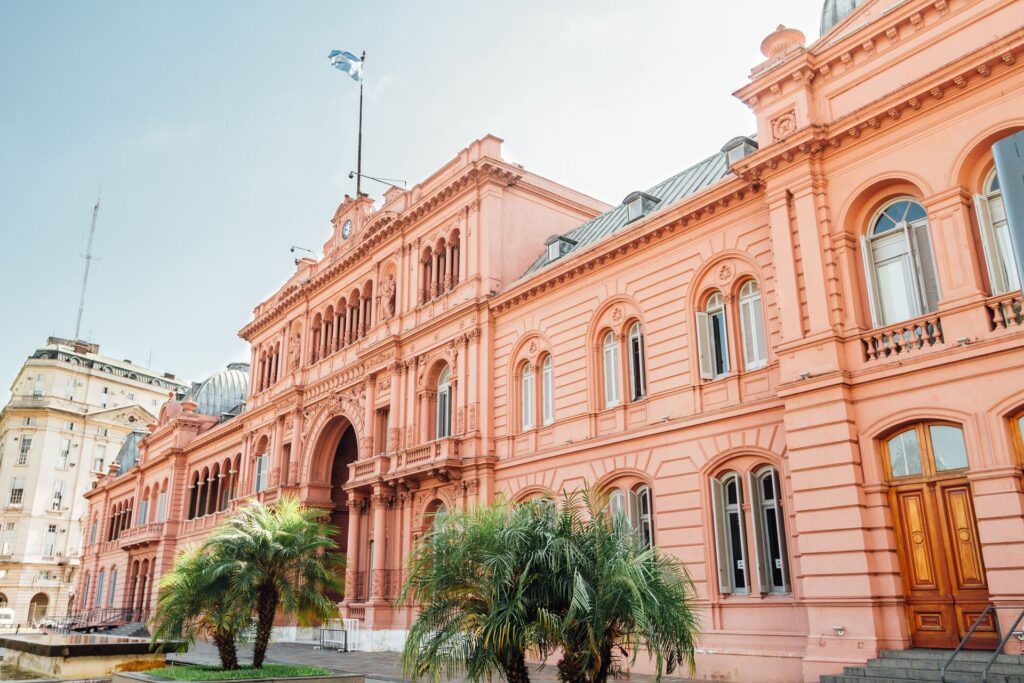
“Argentina is very European – most of us are descendants of the Italians or Spanish and you see it in the food and the culture. Its capital, Buenos Aires, is known as the Paris of South America and people fall in love with the buildings and the pace of life. Many people said that it is a place that they would like to stay. Not to mention Argentinian wine is world renowned for good reason.”
Stretching 2,360 miles (3,800 km) from its amazonian north to its Antarctic tip, Argentina is the eighth largest country in the world, encompassing immense plains, deserts, tundra, mountains and forests and thousands of miles of ocean shoreline.
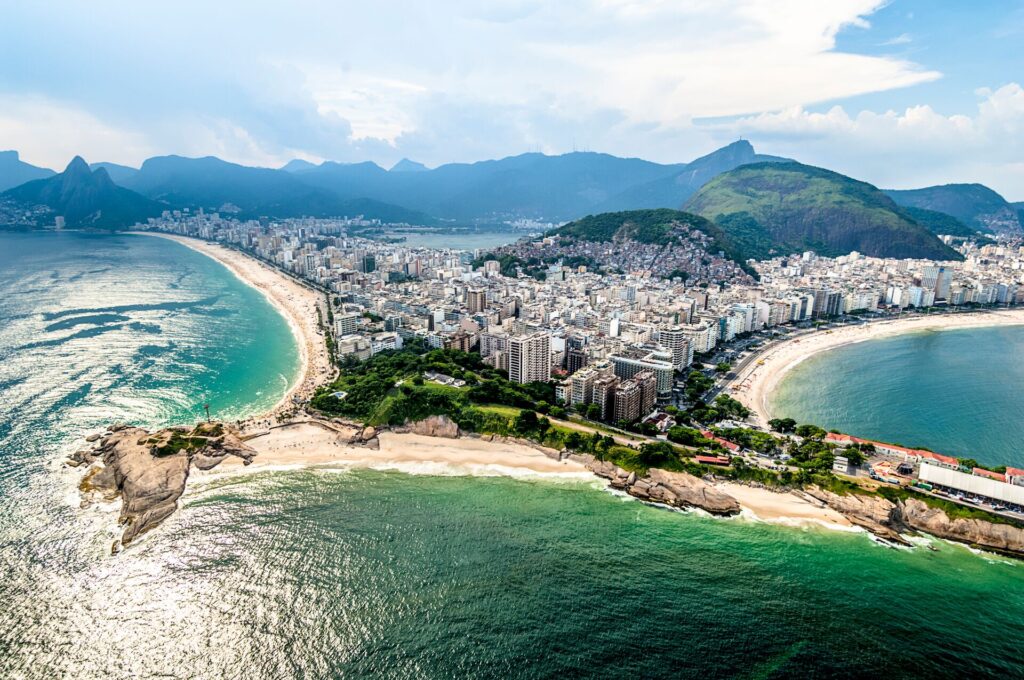
“Brazil has a very different personality. When you when you go to Brazil, it’s more about carnival and the beach – I always joke with the local tour guides there and ask them when they work, because it seems that they spend all day on the beach!” she tells us laughing. “It feels like a place that they are always on holidays in the good sense of the word.”
Brazil is the largest country in South America and the fifth largest nation in the world. It forms an enormous triangle on the eastern side of the continent with a 4,500-mile (7,400-kilometer) coastline along the Atlantic Ocean. It has borders with every South American country except Chile and Ecuador. While Brasilia is the country’s capital, Rio de Janeiro with its famous Copacabana Beach and Sugarloaf Mountain is the city most foreigners have their hearts set on visiting.
“I’ll never tire of Iguassu Falls”
“Every time I have to go to the falls, I’m happy and it feels like home,” says Fernanda. “What is wonderful is that every time that you go the experience is different. Sometimes you get there and it’s full of rainbows. Sometimes you get there and there is no water giving you a different landscape to view. Then sometimes you get there, and the quantity of water is so impressive that you cannot describe what you are watching.
“It’s very difficult to explain people how you feel when you are there. You have to be there to truly understand the good vibe that you have and the energy that the place itself has. It’s something that even a thousand pictures cannot convey. But once that you are there, it is always so much more than you expected. Is always much more. It’s not the same experience for everyone, but everyone has a unique experience of the falls every time.”
If you are inspired to visit Iguassu, take a look at our Argentina, Uruguay and Brazil Discovery premium tour. And in the meantime, flex your travel knowledge and feed your wanderlust with our fun weekly quiz, Insightful Travel Trivia.
LIKED THIS POST? SHARE WITH YOUR COMMUNITY

